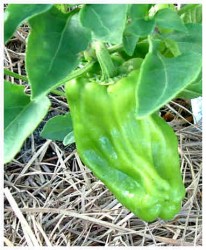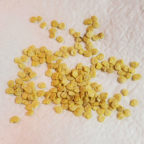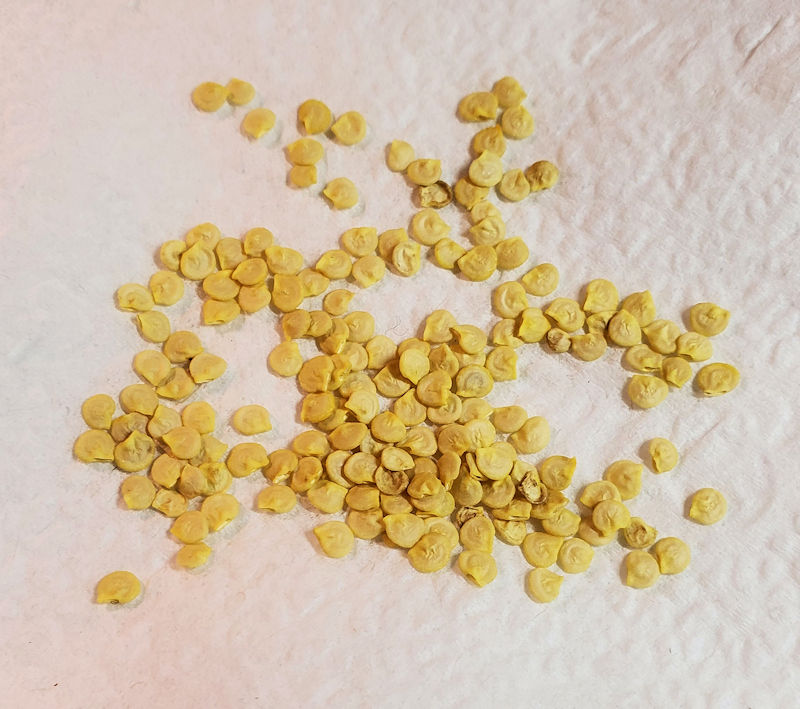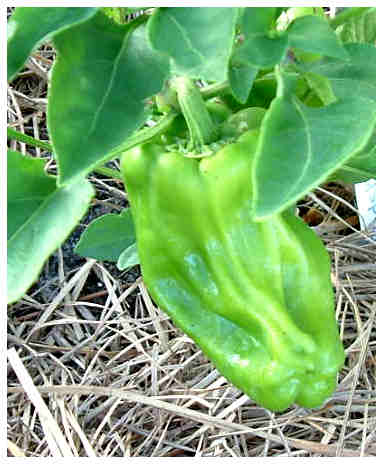Planting Grocery Store Bell Pepper Seeds
Planting grocery store bell peppers – can you do it? Sometimes you taste a bell pepper from the grocery store and it tastes so delicious, so why not save seeds? You can, with some caveats to consider — let’s talk about it.
Saving Grocery Store Bell Pepper Seeds
The very first thing to know if that you have to save the seeds from a ripe pepper — yellow, orange, red, etc. Green peppers are actually immature fruits, so don’t bother trying them (unless you are up for a challenge, LOL).
The next thing is to know that there is a very good chance that the pepper you bought is a hybrid. Hybrid peppers usually don’t breed true (unless the parents are very similar), so you may end up surprised with the fruits that grow. (Please don’t confuse the term “hybrid” with “GMO”; they are not the same thing.)
Finally, you may have a low germination rate, due to various circumstances, so plant more seeds than you think you will need. If they all sprout, great! It’s easier to get rid of the weaker plants, than it is to wait and wait and your seed doesn’t sprout.
Planting Grocery Store Bell Pepper Seeds
Now comes the fun part; saving those seeds and planting them! Here are the steps:
- Cut open your pepper and remove the seeds with your fingers. It’s easiest to do this over a paper plate or paper towl.
- Once the seeds are all out, let them dry out some on the paper plate or on a paper towel. If you’re in a dry climate, 1 day may be fine. In a more humid environment, plan on several days.
- Once the seeds are dry, take a look at them carefully. Discard any seeds which are dark, or which seem misshapen.
- Using your favorite seed starting medium, plant your pepper seeds.
- Water in the seeds well, but don’t leave them in a puddle of water.
- Remember to cover your container with a plastic dome, plastic wrap, sandwich bag or the like. Don’t make it airtight; you just want the container to keep some of the moisture in.
- If you have a seed germination mat, please use it; peppers really like to have bottom heat for germinating!
- Check your container every few days; if it seems dry, mist the seed starting medium with some warm water.
Peppers usually take between 5 days to 2 weeks to sprout, depending on the environment and the pepper itself. Don’t give up until it’s been 3+ weeks and no sign of germination. By planting extra seeds, you raise the chances of getting at least one to sprout!
(Note: If you are trying to germinate a habanero or other really hot pepper, they may take 4 weeks to germinate — don’t give up on them until 5+ weeks.)
You don’t need to put your seeds under a light for them to germinate, but once they do, move the seeds to a sunny windowsill or under a plant grow light. And once your weather gets warm enough (70+ degrees days, no lower than 55 degree nights) you can plant them outside. Here are some more tips on growing bell peppers.
Peppers grow well in containers (which is how I grow mine these days). I usually will plant 1 pepper in a 3-gallon container, or two plants in a 5-gallon container.  You can obviously also plant them in the ground.
Set the peppers in an area where they get at least 6 hours of direct sun a day.
Now because you have no idea as to what pepper variety your seeds came from, it’s hard to know how long it will take your seedling to go from planting out until you have some “green ripe” peppers, much less fully ripe (red, orange, yellow, etc.). And again, likely the pepper you saved seeds from was a hybrid, so you won’t know exactly what your pepper will end up like until it produces the fruit.
Have fun growing your grocery store pepper plants!
Planting Pepper Seeds
Planting pepper seeds is pretty easy. Sure, all you need to do is put the pepper seed in soil, cover it and water it, but there are a few more steps along the way that can up the germination rate of your pepper seeds. Let’s take a quick look.
Seed-Starting Medium
I can’t remember the last time I planted a pepper seed outdoors, directly into the soil. The germination rate is really poor that way, and seed-starting medium (“soil”) is a much better bet.
Go to your local garden center and locate some seed-starting soil. You can use straight sphagnum moss (finely chopped) or sphagnum and vermiculite combined, if you can’t find a ready-made seed-starting medium.
Do not use garden soil directly; there are too many bacteria, spores and whatnot in it; fine for older transplants, not so great for seeds.
Containers for Planting Seeds
You’ll see in the two videos that I’ve used plain paper cups (“Dixie cups”) for my containers. Cheap and easy to find, you can poke holes in the bottom for drainage, and when it comes time for planting, the cup tears away from the soil very easily.
Planting Pepper Seeds Videos
Here are two videos I made on planting pepper seeds. The first one goes over supplies; the second is the actual technique. And after the second video, I’ll list where you can get some of the supplies online, if you can’t find them locally.
Enjoy!
And here’s part 2 of how to plant pepper seeds.
Redskin Pepper in the Garden
I decided to try the Redskin pepper, even knowing my track record with bell peppers hasn’t exactly been stellar. But I have to admit to being impressed with Redskin. Finally, a bell pepper that actually produces for me in South Florida!
Planting Redskin Pepper
 I had to plant this versatile pepper from seed, as there were none in the local garden shops.  The plant started out a little spindly at first, but started growing nicely once in the garden.
I had to plant this versatile pepper from seed, as there were none in the local garden shops.  The plant started out a little spindly at first, but started growing nicely once in the garden.
Given my luck with bell peppers, I planted 4 Redskins, hoping at least 1 would produce some peppers. Whoa! They all are producing nice little bells.
Now Redskin doesn’t grow as large as traditional bell peppers, but it’s a great “personal size” snack. My peppers are around 4″ long and maybe 2.5″ wide. The taste is quite pleasing, even when green. And speaking of color, this pepper is red when fully ripe.
Low-Growing Pepper
This pepper is a low growing pepper — wider than it is tall. This makes it fantastic for growing in containers! In fact, I have 3 of my Redskins in containers and only one in the ground (and yes, they do grow a bit taller in the ground).
For someone who traditionally cannot grow bell peppers, this one is thriving and gets an “A” in my book! Looks to me like I will have plenty this year. So if you’ve been having problems growing bell peppers, this is one variety I recommend you trying.


